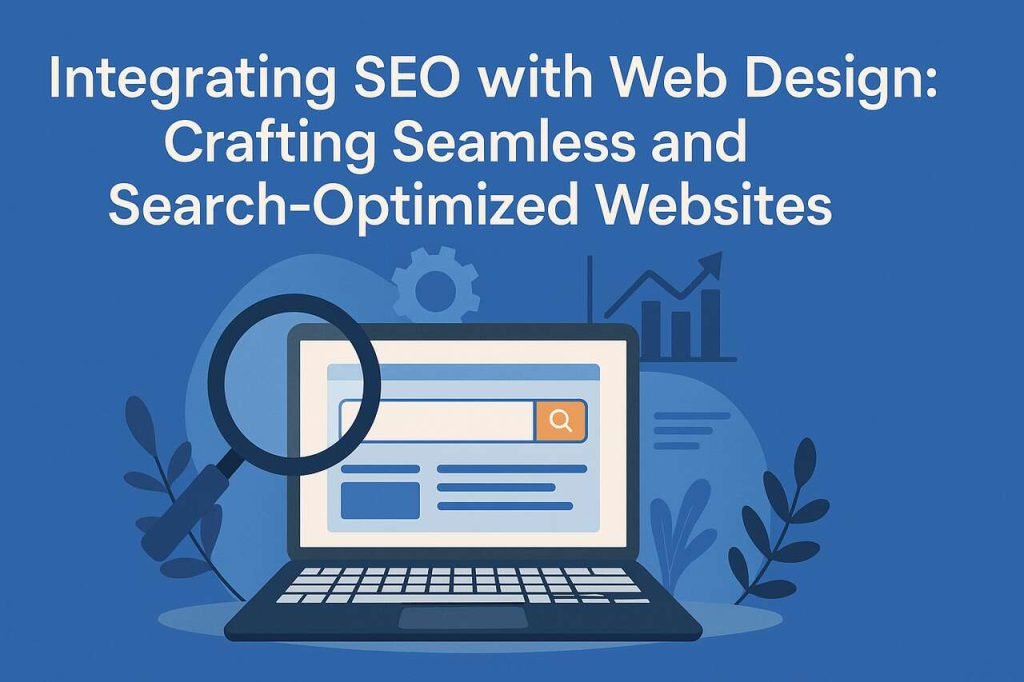Introduction to SEO and Web Design Integration
In a digital world teeming with information, capturing the user’s attention is more critical than ever. The amalgamation of SEO and web design represents an essential strategy for businesses looking to boost their online presence. This integration works to enhance a site’s visual appeal and ensure it fares well on search engine results pages (SERPs). However, this marriage of aesthetics and optimization isn’t merely about weaving technical components together; it is about creating an experience that engages and retains the user while appealing to search engine algorithms.
SEO and web design connect beyond simply using keywords or meta-tags. They have a synergistic relationship in which design informs SEO strategies and vice versa. Websites designed with the user in mind perform better, keeping visitors engaged and convincing search engines of their value, thereby improving rankings and helping achieve business goals.
The Importance of User Experience in SEO
User experience (UX) is a pivotal factor that impacts a website’s search engine ranking. A site that boasts stellar UX not only ranks higher but also converts visitors into customers more effectively. When users land on such a site, navigation becomes intuitive, content is easily digestible, and the likelihood of engagement spikes. According to a report by TechCrunch, effective UX can substantially enhance a site’s search performance, reinforcing its importance in the digital realm. Many SEO services now consider UX a critical component of their strategies, recognizing that technical optimization alone is insufficient for sustained visibility.
Favorable UX can be achieved by focusing on several key aspects: clear layout, well-structured information, interactive elements, and rapid response times. Ensuring that these components harmonize increases user satisfaction, reduces bounce rates, and signals to search engines that your site is relevant and valuable, encouraging higher rankings.
How Mobile Responsiveness Affects SEO
With more global users accessing the internet via mobile devices than ever before, it has become imperative for websites to be mobile-friendly. Google’s adoption of mobile-first indexing highlights the necessity for responsive web designs in maintaining high search rankings. This means that the mobile version of your website is considered foremost when determining your site’s placement in SERPs.
A responsive design adapts fluidly to different screen sizes and resolutions, ensuring all users enjoy a rich web experience regardless of the device used. This adaptability is integral not only to user retention but also to ensure compliance with search engine requirements. Businesses can cater to their audience’s preferences by prioritizing mobile responsiveness while fulfilling search engine criteria for improved visibility.
The Role of Fast Load Times in Search Rankings
In the fast-paced online environment, users demand immediate responses. Thus, page load times play a critical role in retaining user attention and achieving desired search rankings. Research consistently shows that a delay of even a second can significantly increase bounce rates, where potential visitors abandon the site in favor of quicker alternatives.
Optimizing load times can be accomplished by reducing image sizes, enabling compression, and minimizing JavaScript. These adjustments help reduce the time it takes for a site to become interactive, improving user experience and signaling to search engines that your site is efficient and user-centric. Consequently, faster load times are intrinsically linked to higher rankings and better visibility.
Effective Use of Keywords in Web Design
Keywords are the backbone of search engine optimization, guiding users to the content they seek. Integrating these keywords seamlessly into your web design requires strategic placement and natural flow. Elements such as headers, meta descriptions, and URLs should all contain relevant keywords, enhancing the user experience and the website’s attractiveness to search engines.
To identify the most effective keywords, tools like Google Keyword Planner can provide valuable insights into what potential customers are searching for. By targeting the right keywords, businesses can ensure they attract the most relevant audience, enhancing engagement and increasing the likelihood of conversions.
Designing for Search Engine Crawlers
Search engine crawlers, or bots, are tasked with indexing websites for search engines. A significant portion of optimizing a site for SEO involves designing to accommodate these crawlers. Effective web design includes consideration of how these automated systems interact with a site, from navigation structures to content hierarchy.
Creating an intuitive sitemap is one approach that facilitates easy indexing by search engine bots. Adhering to Google’s guidelines for webmasters ensures that design decisions enhance crawlability, securing a site’s position in search results and offering a streamlined experience to its users.
Balancing Aesthetics with Functionality
Striking a balance between aesthetics and functionality is crucial in the quest for captivating web designs. A visually appealing site can draw users in, but it should never distract from the ease of use or the quality of information provided. By valuing both beauty and functionality, you create a harmonious experience that serves both the user’s needs and the business’s objectives.
Ultimately, a balanced approach to web design means prioritizing user satisfaction. This includes ensuring that attractive graphic elements do not compromise load times or navigation clarity. It’s important to remember that every design choice should support, not hinder, the user’s journey.
